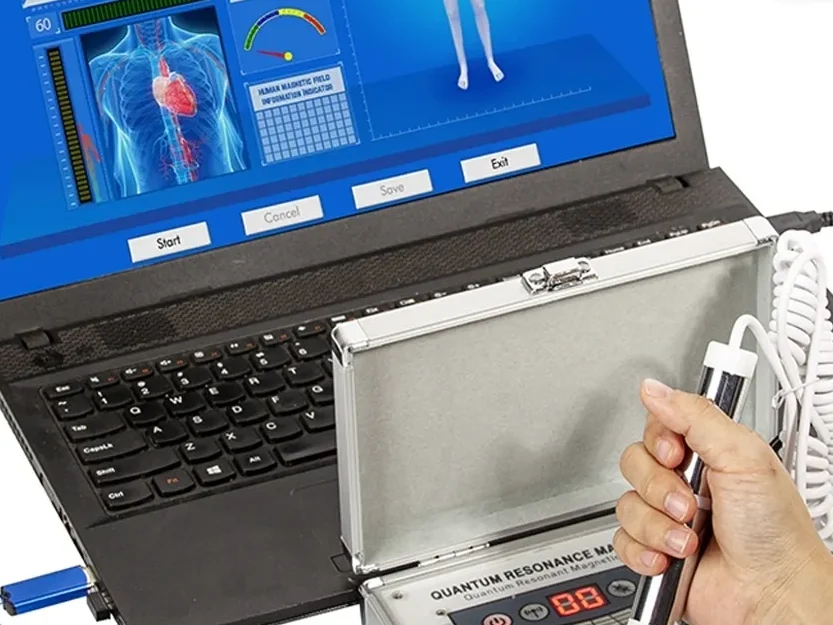
The Quantum Magnetic Resonance Analyzer (QMRA) is an innovative device that merges principles of quantum mechanics, bio-information technology, and electrical engineering to analyze the human body’s magnetic field. By interpreting the electromagnetic signals emitted by human cells, the QMRA provides insights into various health conditions without the need for invasive procedures.
How It Works
The QMRA is specifically engineered for non-invasive health assessments. During a scan, the individual holds a sensor, usually in the form of a handheld electrode while the device collects subtle bioelectrical signals. These signals are processed using advanced algorithms to assess the energetic frequency of cells and organs. The readings are then compared to standard reference models to estimate the user’s overall health condition and identify potential imbalances.
Unlike traditional medical diagnostics that rely on radiation, blood samples, or imaging requiring dyes, the Quantum Magnetic Resonance Analyzer performs its function safely and painlessly, making it suitable for frequent health monitoring. It is particularly valued in holistic and preventative healthcare settings where regular assessment can lead to early detection of potential health issues.
Comparison to Other Diagnostic Tools
The QMRA operates on a principle similar to Magnetic Resonance Imaging (MRI) in that it captures and interprets electromagnetic waves emitted by tissues and organs. However, while MRI machines require large equipment and often clinical environments, the QMRA is portable, affordable, and does not expose the body to strong magnetic fields or radiofrequency energy.
Its speed and ease of use allow health professionals to obtain a broad overview of a person’s health status within minutes. From liver function to cardiovascular condition, from bone density to vitamin and mineral levels, the QMRA provides a multi-system scan with a user-friendly report.
Design and Variations
Although there are various versions of the Quantum Magnetic Resonance Analyzer on the market, often developed by different manufacturers, most share similar core technology and functions. Some models may include additional features like nutrient deficiency analysis, toxin detection, or organ-specific diagnostics, but the underlying concept remains consistent: detecting and interpreting the body’s bio-magnetic signals.
Benefits and Use Cases
- Non-invasive: No needles, radiation, or bodily fluid samples required
- Quick results: Health reports generated in just a few minutes
- Safe for regular use: Can be used frequently for continuous health tracking
- Holistic view: Analyzes various body systems in a single session
- Early detection: Can indicate imbalances before physical symptoms appear
Healthcare practitioners, nutritionists, wellness coaches, and alternative health providers often use the QMRA as a preliminary assessment tool, helping guide further testing or lifestyle recommendations.

























